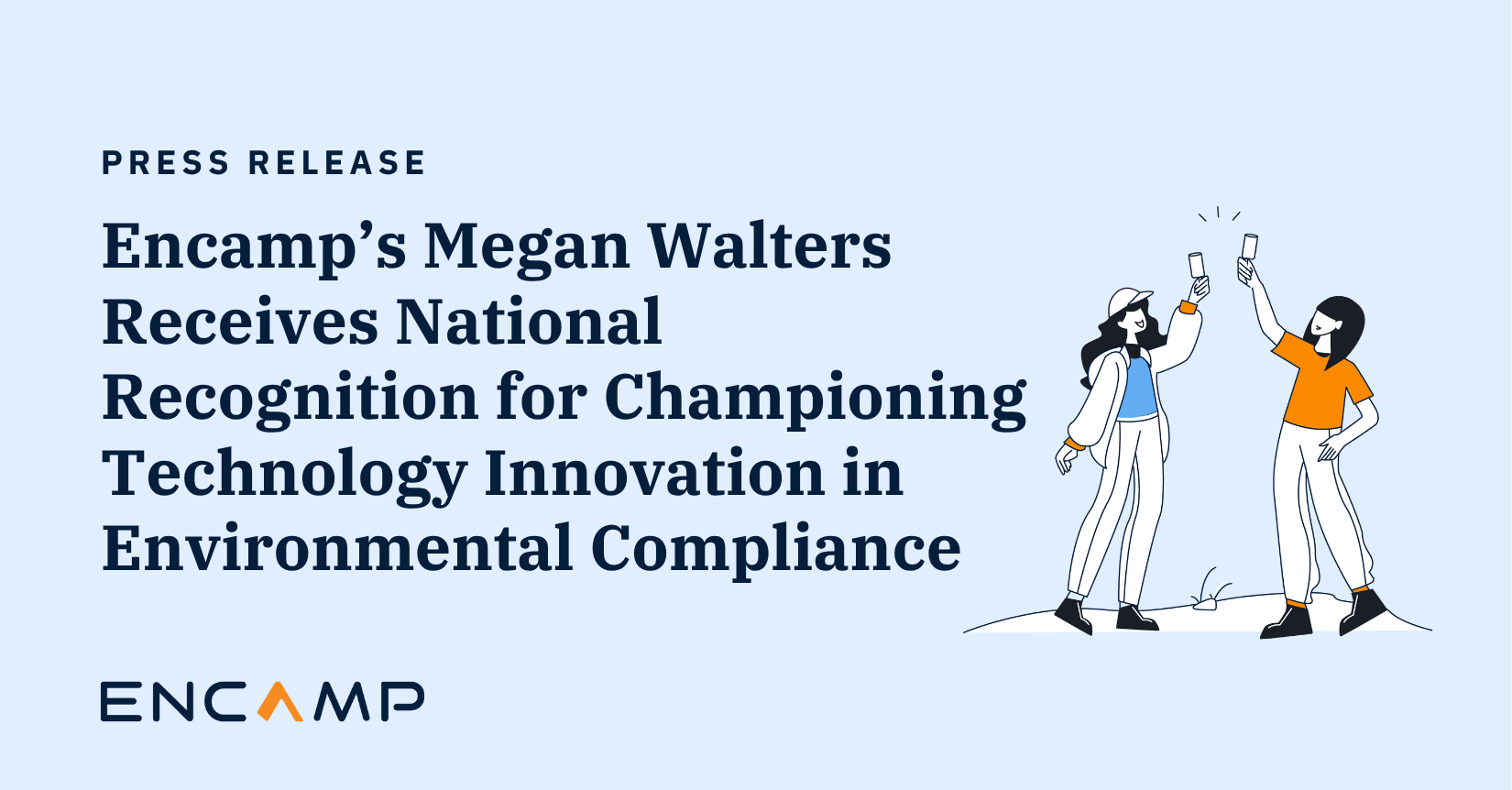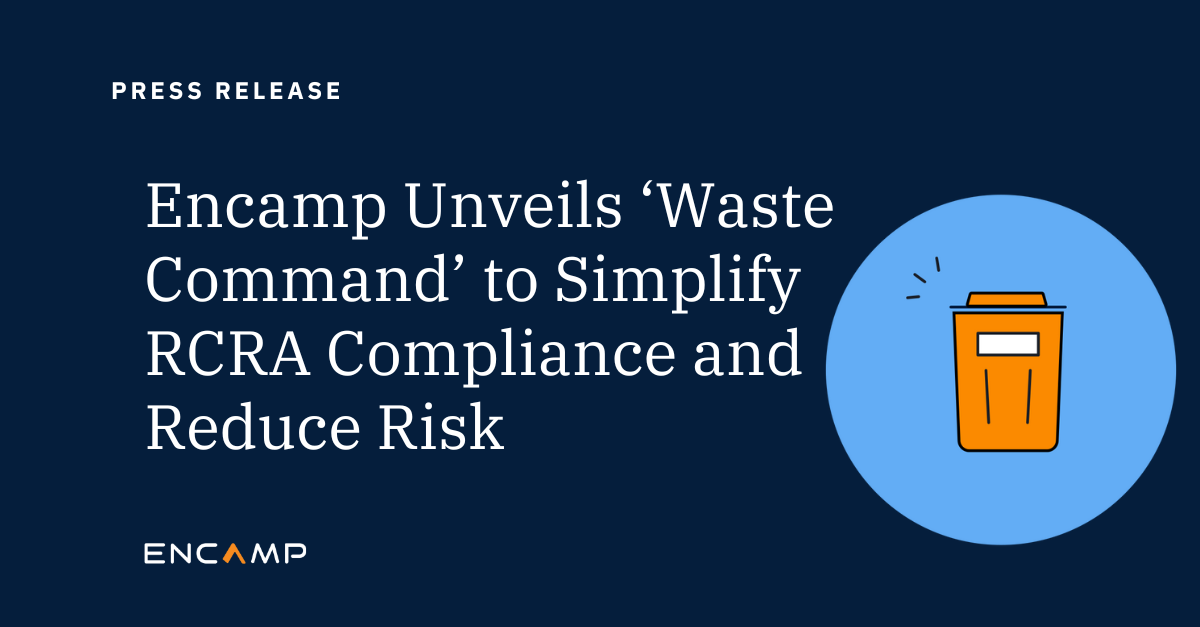Introduction
California is home to a diverse range of industries, many of which handle hazardous materials as part of their operations. Manufacturers may use hazardous chemicals as raw materials throughout their production processes or produce them, construction companies use hazardous solvents, and oil and gas companies involved in extraction or refining of oil and gas use a variety of regulated hazardous chemicals such as diesel fuel. These use cases, as well as others within the agriculture, automotive, and healthcare industries among others are all around us, helping to provide us the creature comforts we’ve come to appreciate.
Ensuring the safety of these operations and the well-being of the surrounding communities is of paramount importance to California’s governing bodies, and the Hazardous Materials Business Plan (HMBP) Program is a key initiative designed to achieve this goal. In this blog post, we will provide a comprehensive overview of California’s HMBP Program including: how to comply, common challenges during compliance, and potential exemptions.
Understanding California’s Hazardous Materials Business Plan Program
The Hazardous Materials Business Plan (HMBP) Program is a state-mandated program that aims to protect public health, safety, and the environment by ensuring that businesses handling hazardous materials in California have adequate emergency response and training plans in place. These plans outline how hazardous materials are stored, handled, and disposed of, in addition to providing crucial information to first responders in the event of an emergency, so that they can respond in the safest and most effective manner.
The California Environmental Reporting System (CERS) serves as the central reporting portal for HMBPs, which allows businesses to electronically submit their HMBP information, ultimately delivering it to the relevant Certified Unified Program Agencies (CUPAs).
The HMBP Program is implemented statewide in California, and compliance is enforced by the local CUPAs. Businesses located in different regions of the state will submit their HMBPs to the appropriate local CUPA, which will then review the plans and conduct inspections to ensure compliance with HMBP. In order to ensure compliance, organizations may consider implementing enterprise compliance software.
What are the steps to maintain compliance with California’s Hazardous Materials Business Plan Program?
There are several steps that businesses must follow to meet HMBP compliance requirements:
- Identifying hazardous materials: The first step towards compliance is for businesses to identify and inventory all hazardous materials present at their facility.
- Developing an HMBP: Once a business has identified all hazardous materials on site, they must complete the HMBP that outlines business activities, facility information, hazardous materials inventory, site map, emergency response plan, and an employee training program.
- Submitting the HMBP to the local CUPA: Businesses must submit their HMBP to the appropriate local CUPA via the California Environmental Reporting System (CERS) by the applicable due date.
- Facility inspections: Local CUPAs conduct regular inspections of facilities to verify HMBP compliance and ensure that businesses are adhering to safety standards, meaning that an organization must maintain ongoing compliance.
- Updating the HMBP: Dependent upon the facility’s operations, businesses must review and update their HMBP annually, once every three years (if the facility is not regulated under EPCRA or APSA), or whenever there are significant changes to their hazardous materials inventory or processes. These requirements can also change based on the CUPA’s discretion.
- Employee training: As part of HMBP compliance, businesses must provide ongoing training to employees responsible for handling hazardous materials or responding to emergencies.
While this list covers the requirements of the program, it is an exhaustive list of activities, as each individual requirement may necessitate many additional steps. Working with an expert to identify exactly what your business needs to comply is a great way to get started.
What are the challenges of complying with HMBP?
As you may have guessed, each of the above requirements can present many challenges to organizations, which are made up of many different functions and departments that may experience turnover, etc.
Some common challenges organizations face are:
- Keeping up with regulatory changes: The regulations governing hazardous materials are constantly evolving to address new risks and improve safety standards. Businesses must stay up-to-date with these changes to ensure ongoing compliance with HMBP requirements.
- Accurate identification and inventory management: Properly identifying and tracking hazardous materials can be a complex task, especially for businesses that handle a large variety of chemicals or experience frequent changes in inventory. Implementing enterprise software can help businesses maintain accurate records and comply with HMBP requirements.
- Developing and maintaining a comprehensive HMBP: Creating a plan that addresses all required elements, including facility information, an inventory of hazardous materials, a site map, an emergency response plan, and an ongoing employee training program, can be time-consuming and challenging. Businesses may need to invest in training or hire experienced professionals to ensure they maintain HMBP compliance.
- Ensuring employee training and awareness: Training employees on the safe handling, storage, and disposal of hazardous materials, as well as emergency response procedures, is essential for HMBP compliance. However, employee turnover, time constraints, and a lack of training resources can make it difficult for businesses to maintain a well-trained workforce.
- Navigating local variations: The implementation and enforcement of the HMBP Program can vary between local CUPAs, leading to differences in requirements and interpretations of the regulations. Businesses operating in multiple jurisdictions may find it challenging to navigate these variations and ensure compliance across all locations.
It’s critical to note that, regardless of how challenging the company’s situation, it doesn’t mean they’re exempt from complying with HMBP.
So, what can be done? To help overcome these challenges, organizations should consider the following:
- Designate a compliance officer or team responsible for staying up-to-date with regulatory changes and ensuring that the HMBP is revised accordingly.
- Implement software to accurately track hazardous materials and maintain up-to-date records.
- Invest in training or software to develop and maintain a comprehensive HMBP that addresses all required elements.
- Allocate resources for ongoing employee training and establish a system to track and document training completion.
- Consult with local CUPAs to understand any variations in requirements and ensure compliance across all locations.
Are there any exemptions to the Hazardous Materials Business Plan Program?
Certain businesses may be exempt from the HMBP requirements based on specific criteria. While this post includes a list of exemptions, you should always check with your local CUPA to confirm subjectability to regulations.
Some common reasons a facility may be exempt from complying with HMBP are:
- Small quantities of hazardous materials: Businesses that handle hazardous materials below specified threshold quantities may be exempt from HMBP requirements.
- Retail facilities: Retail facilities that primarily sell hazardous materials to the general public for personal, family, or household purposes may be exempt from HMBP requirements.
- Temporary storage: Businesses that temporarily store hazardous materials during transportation and do not store them at a facility for more than 30 days may be exempt from HMBP requirements.
- Household hazardous waste collection events: Facilities or events that collect household hazardous waste from the public for proper disposal or recycling may be exempt from HMBP requirements.
Conclusion
California’s Hazardous Materials Business Plan Program and the California HMBP re is a vital initiative designed to protect public health, safety, and the environment from the potential dangers posed by hazardous materials.
By understanding the program’s requirements, implementation, and compliance processes, businesses can effectively participate in the HMBP Program and contribute to the safety of their communities. Although there are some exemptions to the HMBP requirements, it is crucial for businesses to consult with their local CUPA to ensure they fully understand their obligations.
California’s HMBP Program serves as a comprehensive framework for businesses to safely manage hazardous materials and mitigate the associated risks. By adhering to the program’s guidelines, businesses not only fulfill their legal obligations but also promote a safer and more sustainable environment for all Californians. To learn how Encamp can help your organization maintain compliance with HMBP, drop us a line here.



